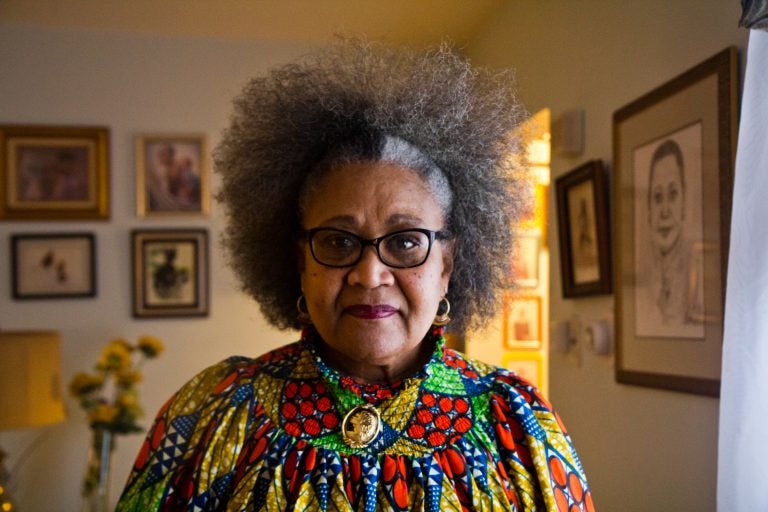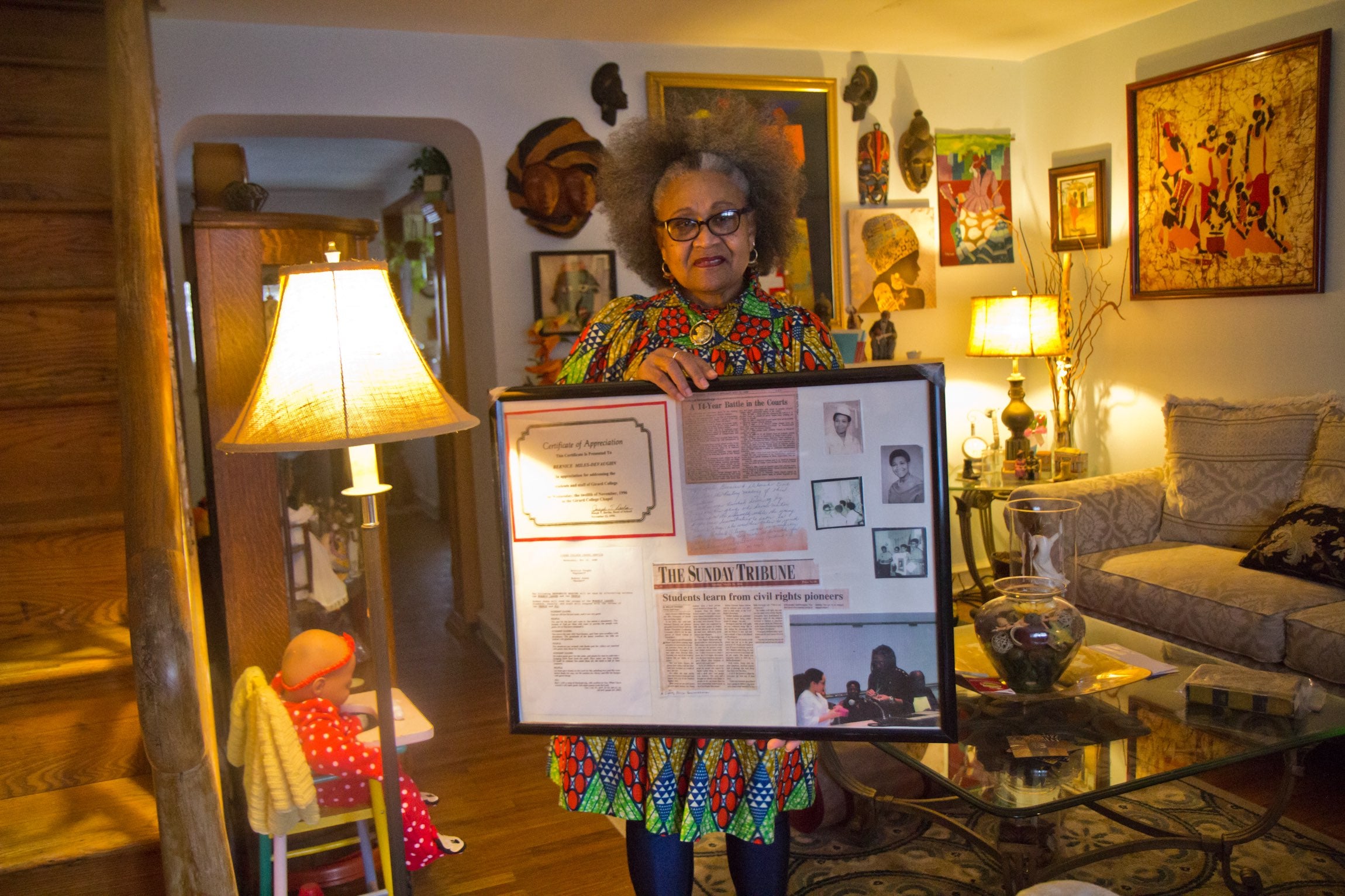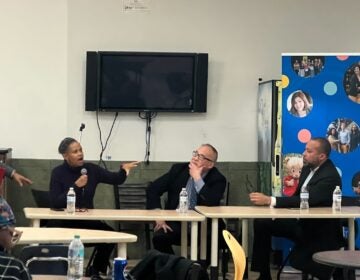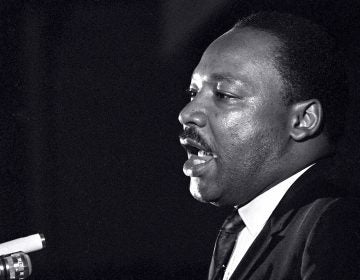Remembering MLK’s visit to Philly’s Girard College, efforts to desegregate the school
Martin Luther King, Jr. visited Girard College in wake of demonstrations to integrate the school founded in Philadelphia for white orphan boys.

Bernyce Mills-DeVaughn picketed Girard College when she was a teenager and attended MLK's speech at the school. (Kimberly Paynter/WHYY)
Bernyce Mills-DeVaughn was born in segregated Virginia. There, she said, the North was regarded as a harbor of freedom. So when she and her family moved to North Philadelphia in 1965, she was surprised to learn Girard College, a private boarding school for orphan boys was whites only.
“Here it is, this massive educational system here, right in the heart of a black community, and none of the residents there in the community were being permitted to attend this school,” she said.
Established in 1848 and funded through Stephen Girard’s fortune, the school served first- through 12-graders who were poor.
Mills-DeVaughn and her family moved to the neighborhood as members of the NAACP began picketing the school in 1965. She and her sisters joined the demonstrations weeks later.
During those months, protesters drew visits from national civil rights leaders, including Martin Luther King Jr.
“For this wall of this school is symbolic of a tragic evil in our nation, it is symbolic of a cancer in the body politic, which must be removed …” he said.
Mills-DeVaughn still remembers King’s visit.
“It was like a movie star was coming to our community,” she said.

Still, she is quick to credit Cecil B. Moore, then president of the local NAACP, with sustaining the seven months and 17 days of protest.
About a month before King’s visit, authorities tried to break up the pickets, Mills-DeVaughn said. She still remembers how her 14-year old sister, Deborah, was attacked by German shepherds.
“Debbie was screaming, she was rolling. Every time she would move, the dogs would move with her, they would move with her,” Mills-DeVaughn said, adding that authorities filed multiple charges against her sister, including disturbing the peace and resisting arrest.
But she said Moore intervened so her sister was only put on probation. He protected the protesters who were arrested, month after month.
“He was their savior,” she said. “Dr. King came just for one day.”
Katherine Haas, director of historical resources at Girard College, said King helped amplify the protesters’ message.
“It was a movement that was started and sustained by Philadelphia activists and organizers, but obviously having somebody like Dr. King who was a national figure to be here and to lend his support to it, just raised the profile of the protest,” Haas said.
Owen Gowans III was 4 years old during the protests, so he doesn’t remember King’s visit. But when he was 7, he was one of the first four African-American boys along with two Asian-Americans who helped break the color barrier at Girard.
They were admitted to the school after a court ruled that Girard College was violating the constitutional rights of African-American students by denying them admission on account of their race.
Gowans said going to the school changed his life.
“My experience at Girard, I love it, I loved it. I wouldn’t change it for the world,” he said.
Gowans said his time there was mostly without incident, except for one instance when an older student called him a racial slur in passing.
“And at that time, I kind of knew they were directing it to me, but nobody tapped me or pointed me out or singled me out,” he said.
Some of his peers, however, report mixed experiences. At least one classmate, who did not return calls to be interviewed for this story, has said he was bullied and threatened.
King’s visits to Philadelphia and other northern cities aimed to show civil rights were an issue all over the country, Haas said.
“That it wasn’t just about the Birminghams of our country, but also that there were civil rights issues to be addressed in northern cities as well,” she said.
On Monday’s day of service in honor of King, visitors to Girard College can see videos of that 1965 visit and hear the oral histories of Freedom Riders and Girard College alumni collected by Temple University.
WHYY is your source for fact-based, in-depth journalism and information. As a nonprofit organization, we rely on financial support from readers like you. Please give today.





